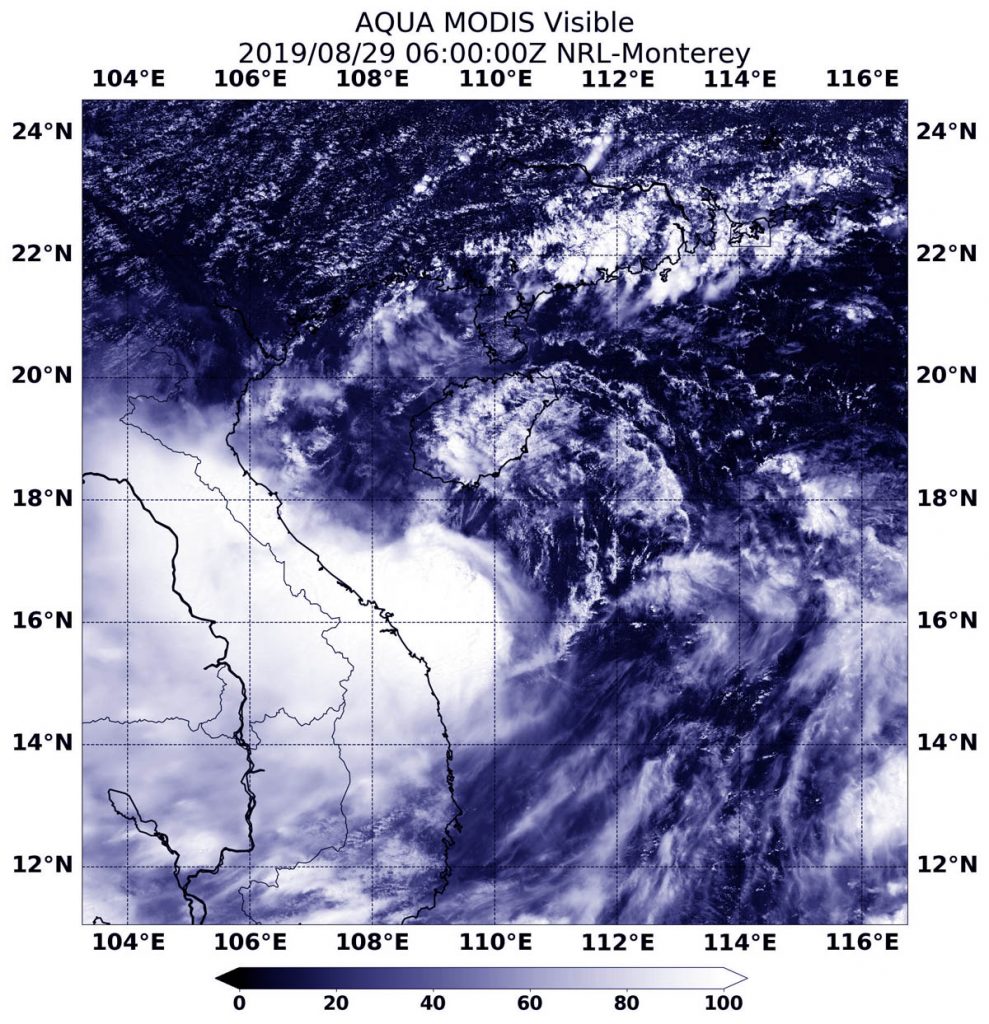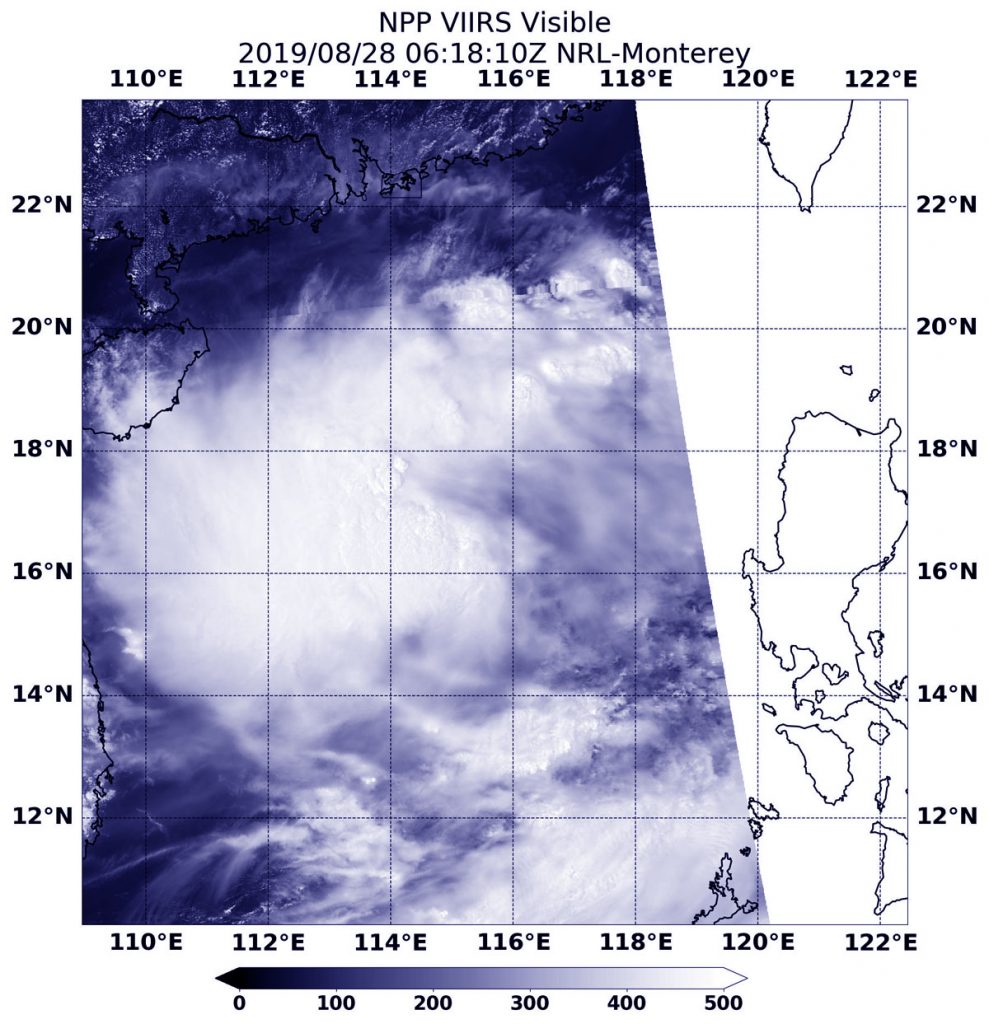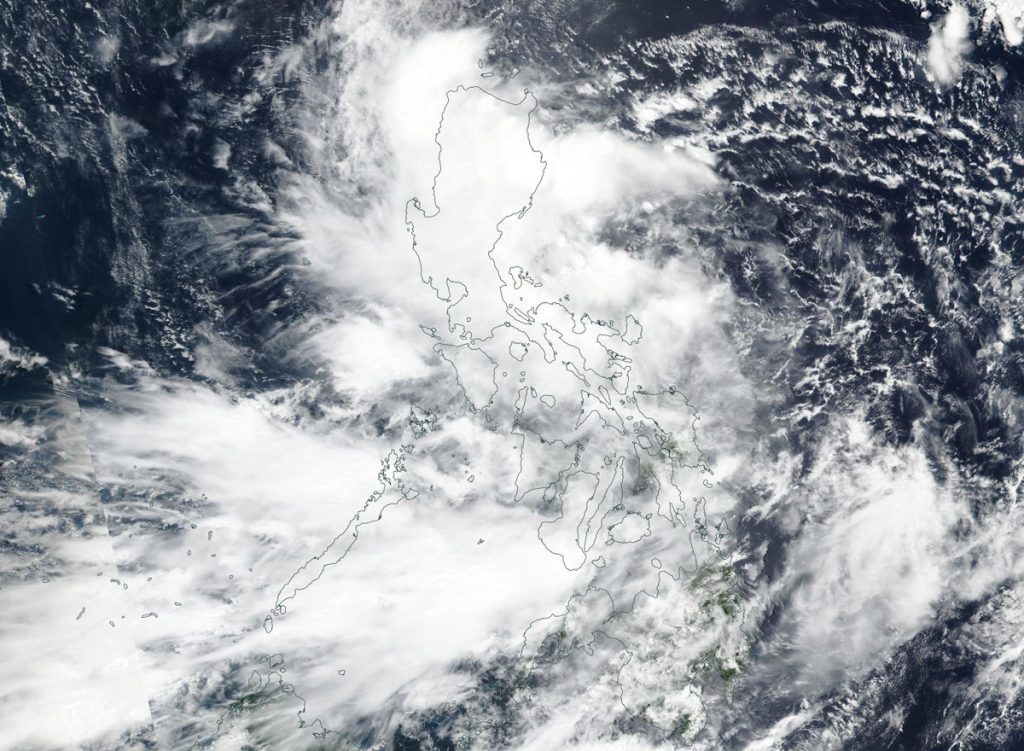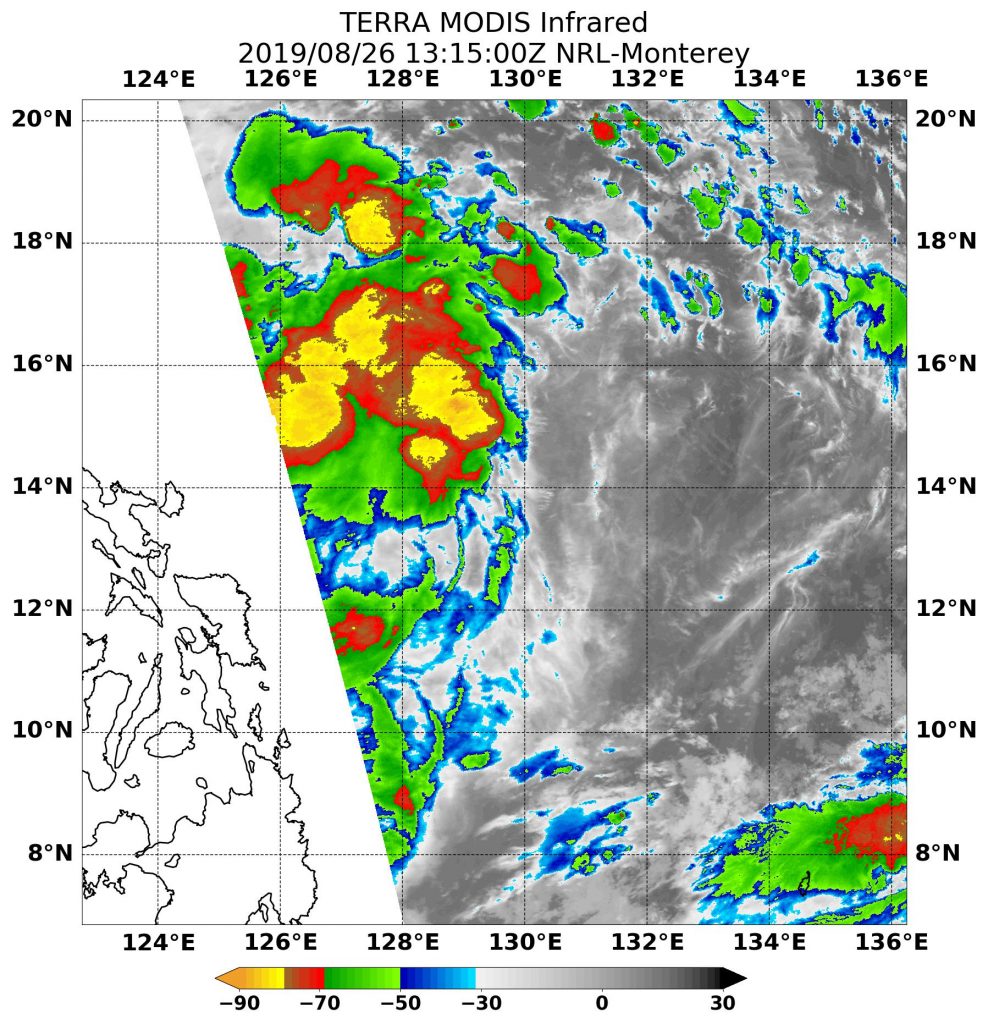Aug. 29, 2019 – NASA Tracks Tropical Storm Podul’s Landfall Approach to Vietnam
NASA’s Aqua satellite passed over the South China Sea and provided forecasters with a visible image of Tropical Storm Podul as it moved closer to the coast of north and central Vietnam where it is expected to make landfall on August 29.

On Aug. 29, 2019 at 2 a.m. EDT (0600 UTC), the Moderate Resolution Imaging Spectroradiometer or MODIS instrument aboard NASA’s Aqua satellite provided a visible image of Podul in the South China Sea. Podul had already started its landfall in central Vietnam and appeared somewhat elongated because northerly winds outside the storm are pushing clouds south of the center.
At 5 a.m. EDT (0900 UTC) on Aug. 29, Tropical storm Podul was centered near 17.8 degrees north latitude and 108.3 degrees east longitude, about 108 nautical miles north of Da Nang, Vietnam. Podul continued moving west and had maximum sustained winds 35 knots (40 mph/65 kph).
The Vietnam National Centre for Hydro-Meteorological Forecasting (NCHMF) is a governmental organization belonging Vietnam Meteorological Hydrological Administration (VMHA) with authority to issue forecasting/warning information for weather, climate, hydrology, water resource, marine weather (i.e. hydrometeorology) and provide hydro-meteorology services. NHCMF has issued a Tropical Storm Warning for central Vietnam with the approach of Podul.
For updated warnings and forecasts from NCHMF, visit: http://www.nchmf.gov.vn/Web/en-US/104/102/18004/Default.aspx



